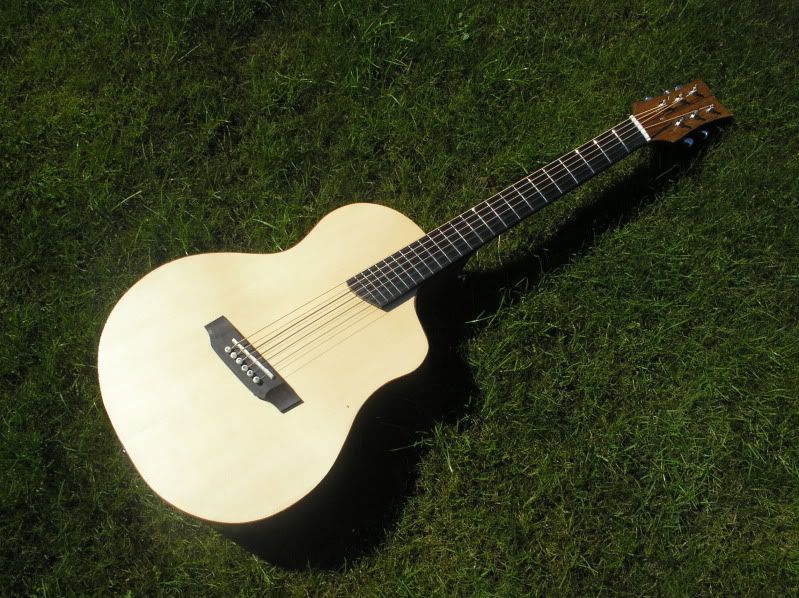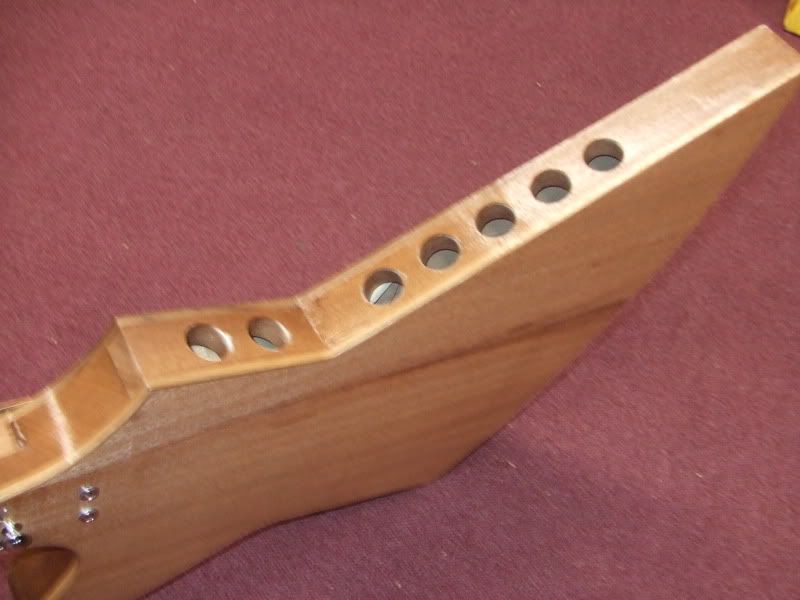Hi there,
I'm just finishing the guitar making course at Anniesland College. I made an experimental steel string guitar, picking up ideas found here and there that I found worth trying, adding my own little touch. The result seem to have a bit of success
My main objective was to think out of the box, and use the little time I had in school to learn/figure out with the teachers/classmates how to make such an instrument. I really didn't see the point to make exactly the same thing as during the first year, and I believe we have enought material in these days to learn how to make a "regular" instruments by ourself.
The main features include a 12th fret neck joint, a floating fingerboard, a fan bracing, a semi -AKA- Benjamin cutaway, a soundhole placed on the side (rib), and a combination of spruce and cedar for the top (yes I dared crossing the border of the big "NO!") The back and sides are made out of walnut.
The sound is very particular. Most poeple find it very jazzy, but it seems to work quite well for blues as well. I really didn't know what to expect as a final result: The bass is just amazing! A few poeple actually jumped by surprise when trying it (including Steve Hicks who came over to play every students' instruments for a show) but I find that the treble needs a bit of improvement, It needs a nicer note.
As the soundhole is on the side -directed at the player- it's more of a personal instrument, more enjoyable for the player than the audiance. And it really does sound completely different to the player. On the overall, everyone seems to love it (including my teachers and classmates)
For my next project I'm planning to make an improved version, fixing the few "technical" problems I encountered during the making of that first one, but this time using only spruce for the top, and without the floating fingerboard, in the hope that this will improve the sustain of the sound. I'll try again the mix Cedar/Spruce once I'll have have improved this model enought.
It's currently being exposed for a show, I'll post some more pictures from the back and sides later if you like.
Cheers!




![Thumbs Up [:Y:]](./images/smilies/smiley20.gif) , and, i would think the top would have different characteristics as far as strength went, lighter bracing perhaps?
, and, i would think the top would have different characteristics as far as strength went, lighter bracing perhaps?